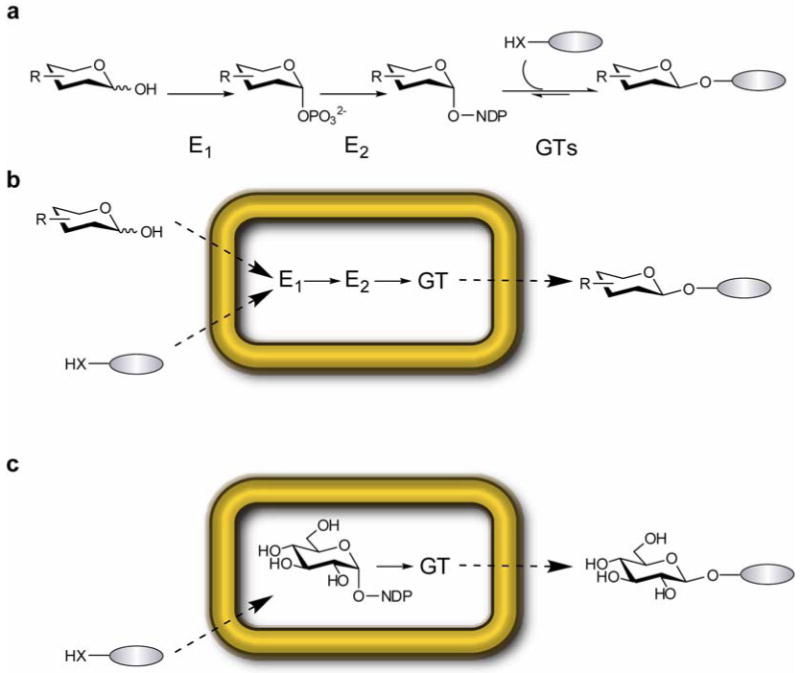Figure 1.

Comparison of methods for glycodiversification of natural products. (a) In vitro glycorandomization. Reducing sugars are converted to sugar-1-phosphates by E1, a flexible anomeric kinase. E2, A suitably flexible sugar-1-phosphate nucleotidyltransferase activates each sugar phosphate to the corresponding nucleotide sugar. Large panels of NDP-donors are used to probe the specificity of natural product GTs. Grey oval represents diverse natural product or natural product-like aglycons (X = O, S, or NH). (b) In vivo glycodiversification via a ‘non-natural glycoside host’ strain. Reducing sugars and aglycons are fed to a bacterial host engineered to express E1, E2, and a promiscuous GT. The endogenous biosynthetic machinery ensures recycling of necessary cofactors and aglycons decorated with non-natural sugars are collected from the culture media. (c) In vivo glucoside host. Aglycons are fed into a bacterial host engineered to express a GT which uses endogenous dTDP/UDPGlc as the glycosyl donor.
